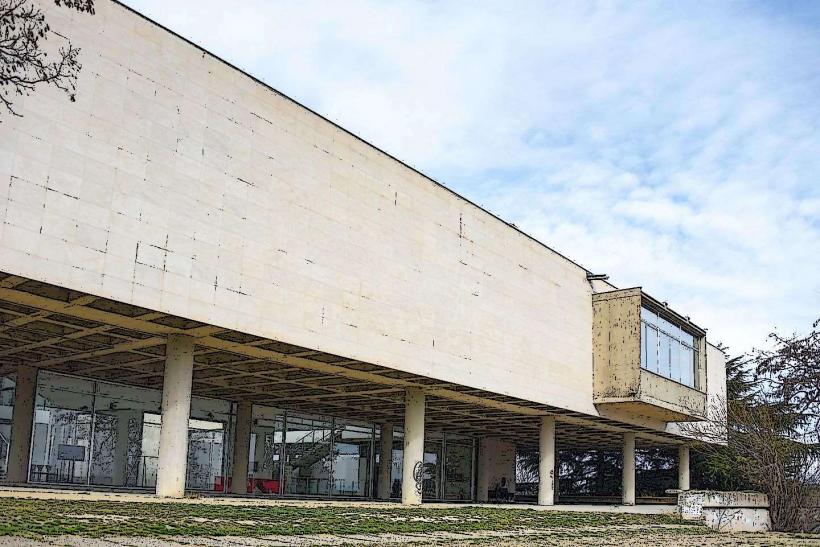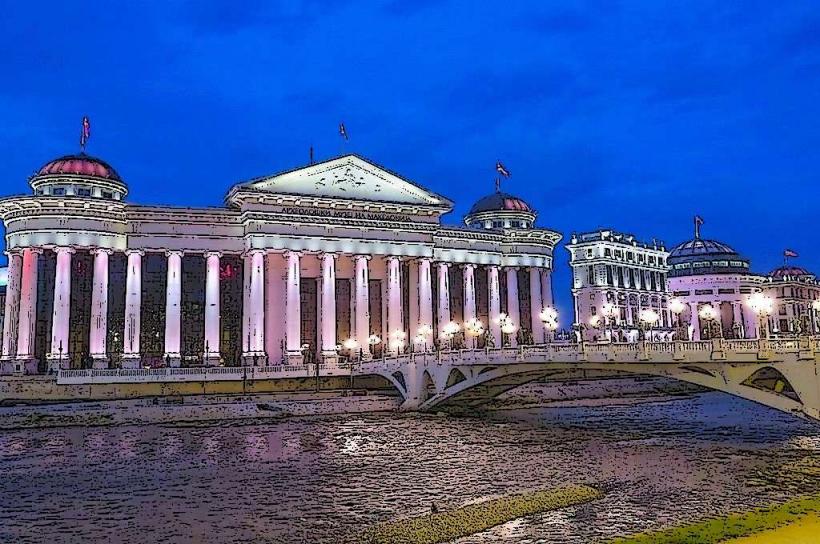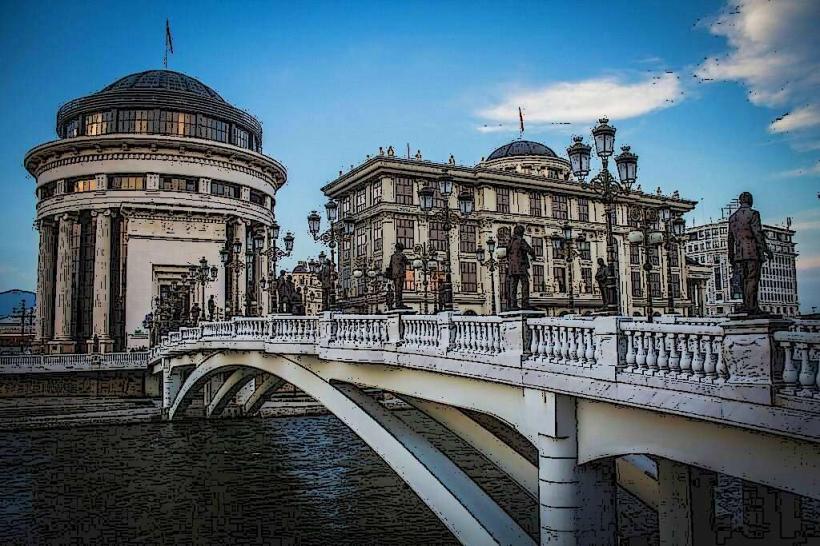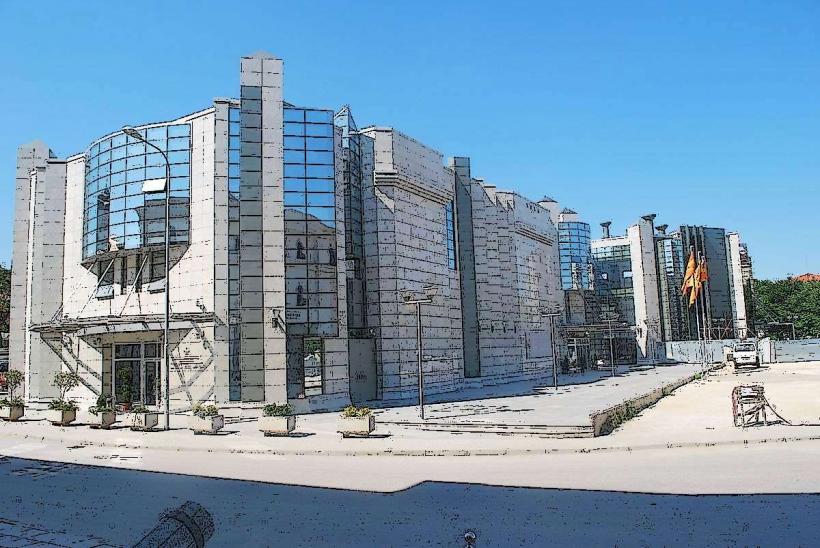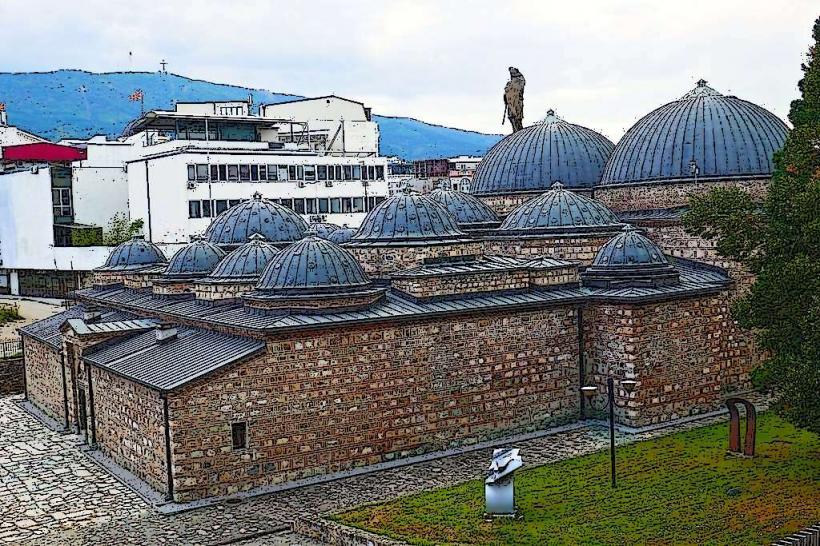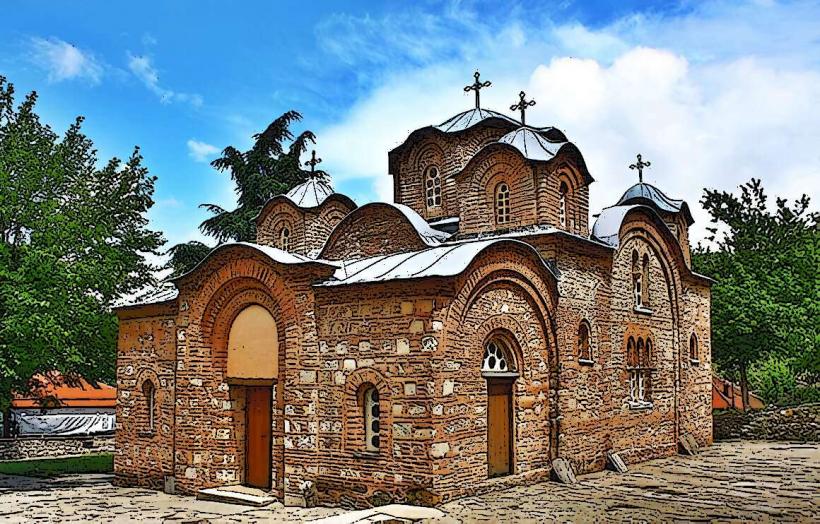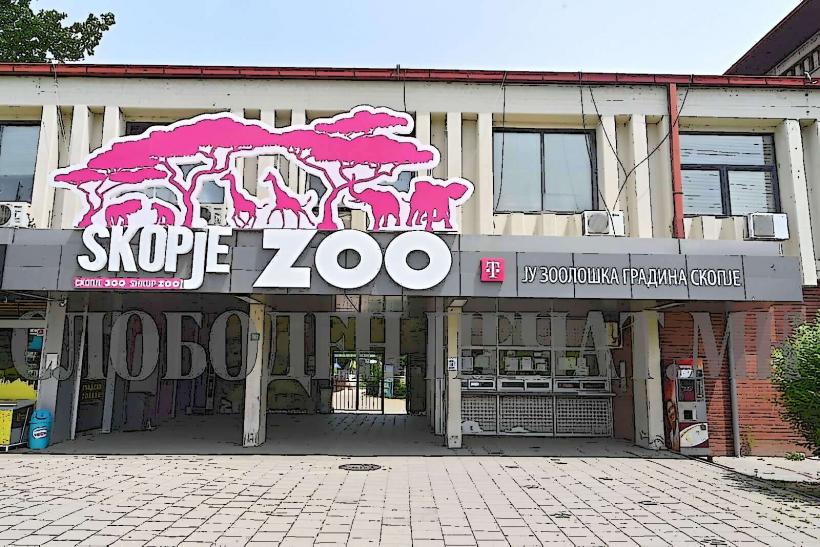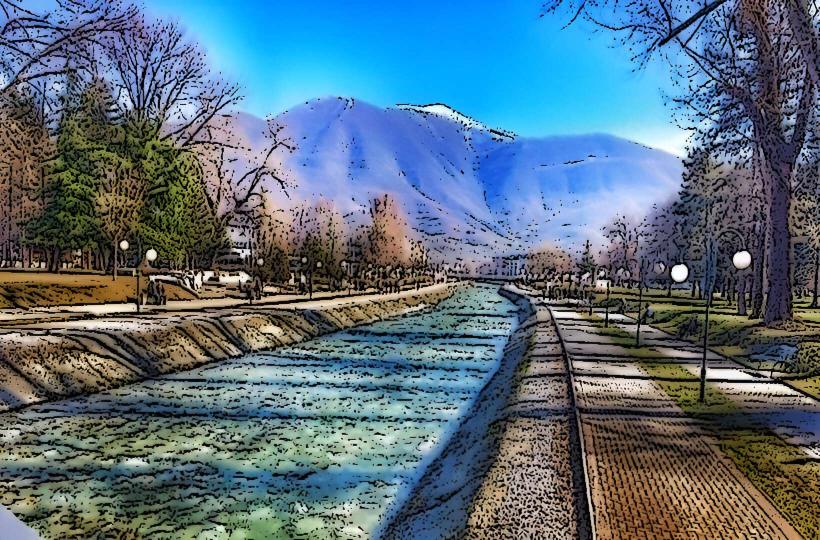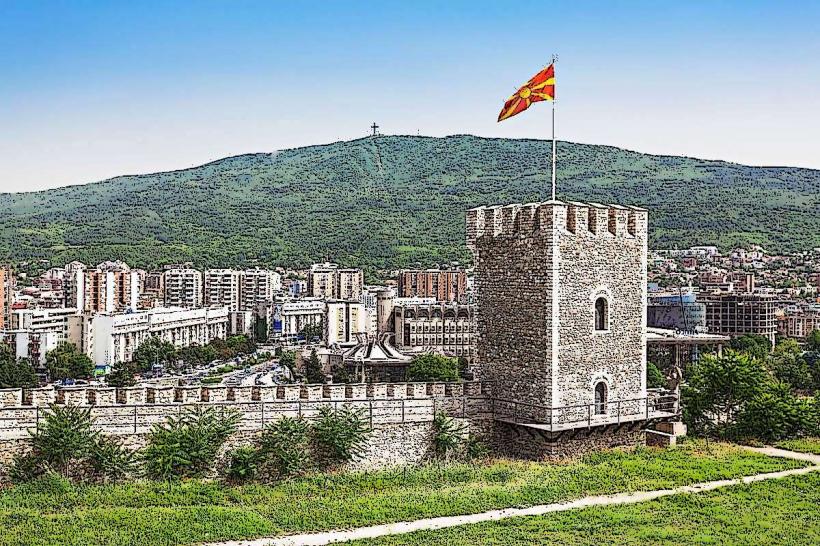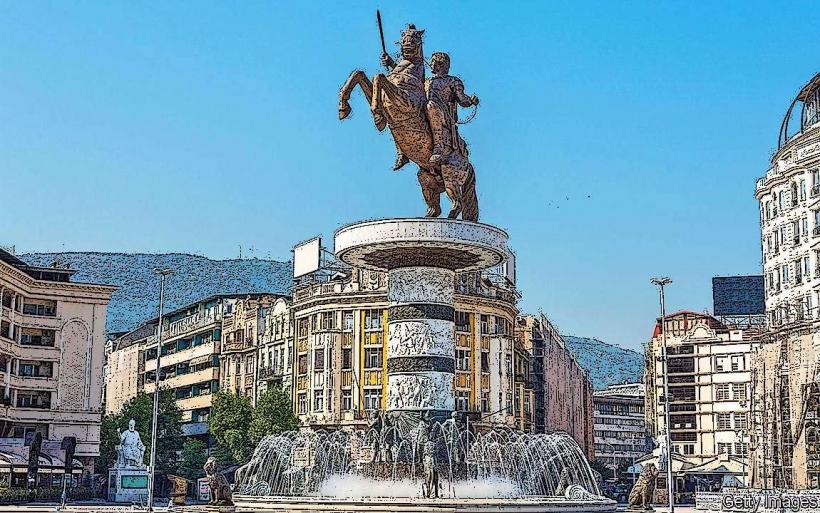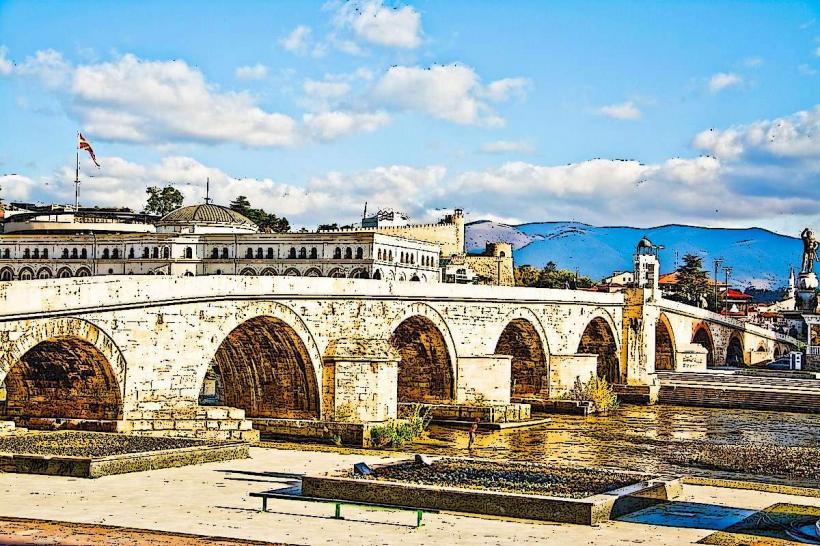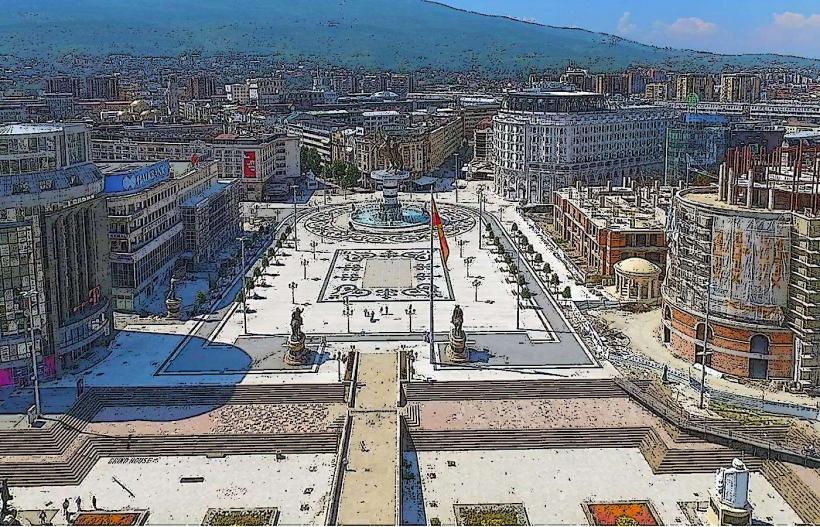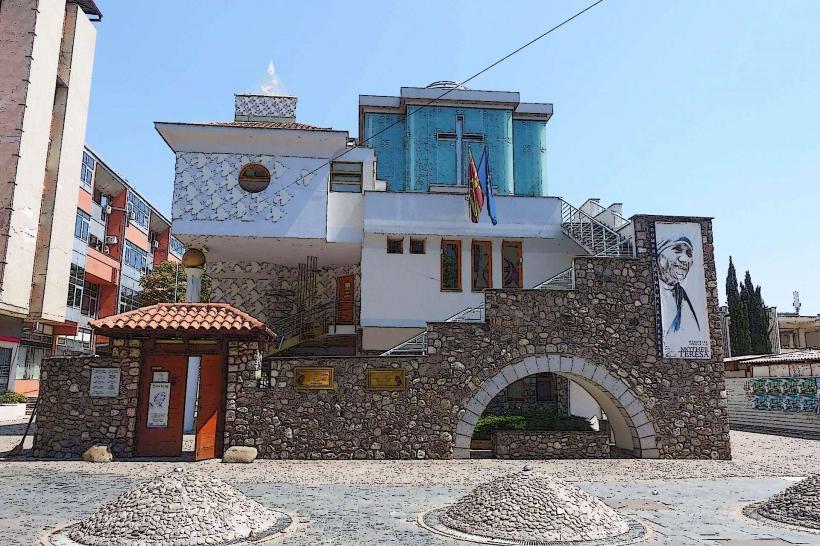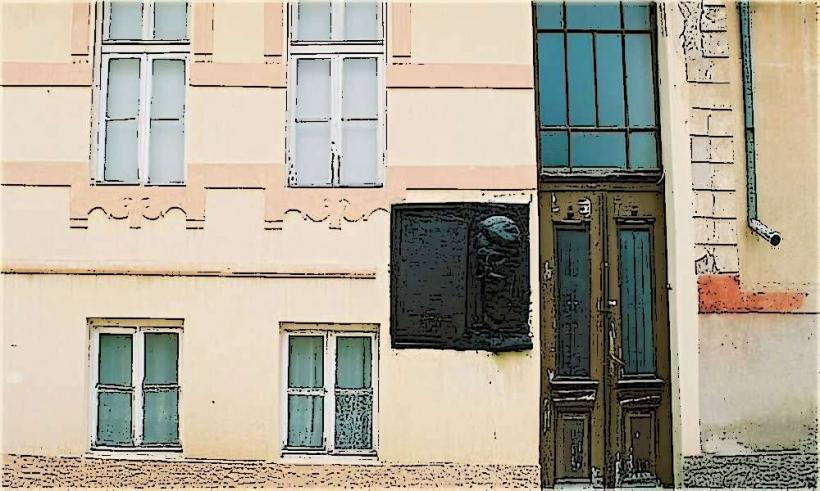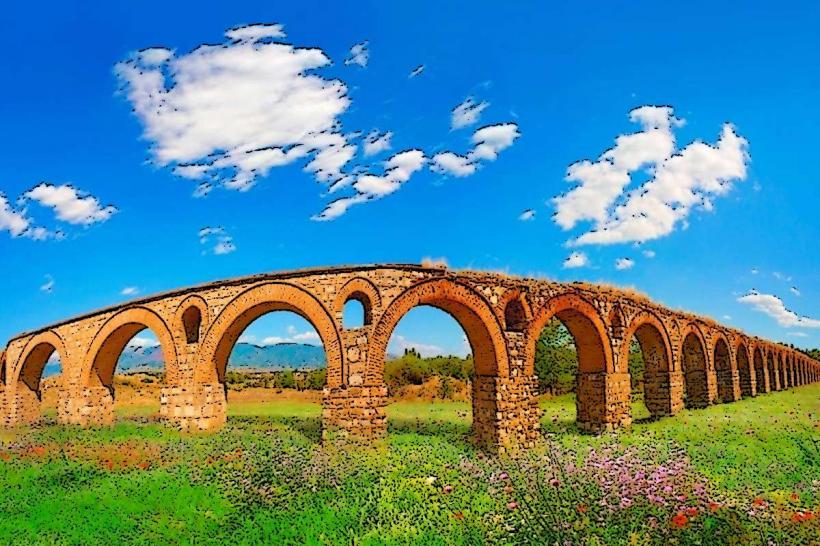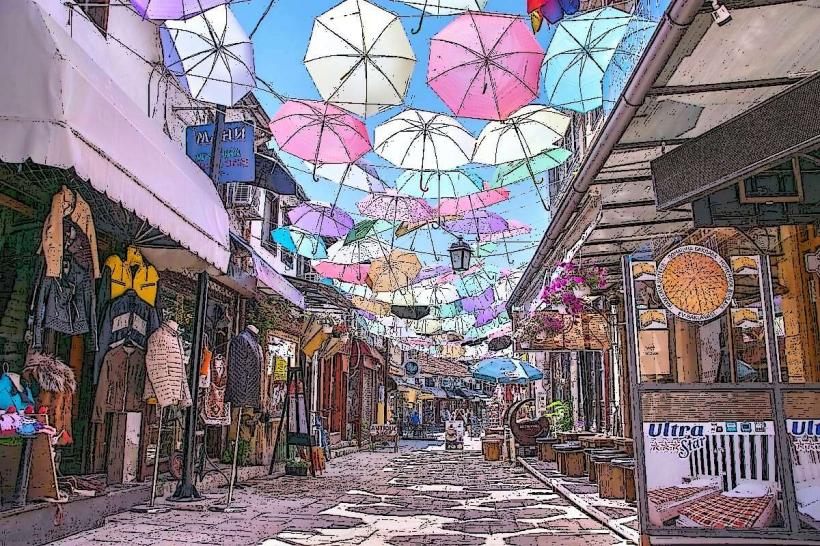Information
Landmark: Museum of the City of SkopjeCity: Skopje
Country: North Macedonia
Continent: Europe
The Museum of the City of Skopje (Музеј на Град Скопје, Muzej na Grad Skopje) is a prominent cultural institution dedicated to preserving and showcasing the history, art, and culture of Skopje, North Macedonia. Located in the former Old Railway Station, the museum is both a historical landmark and a center for education and artistic expression.
Overview
- Location: City Center, near Macedonia Square, in the building of the old railway station.
- Established: 1949.
- Building Significance: The museum is housed in the partially destroyed Old Railway Station, a poignant reminder of the devastating 1963 earthquake that struck Skopje.
- Focus: The museum covers archaeology, ethnology, art history, and urban development of Skopje, spanning from prehistoric times to the modern era.
The Building
Old Railway Station:
- Constructed in 1938, the station was designed by architect Velimir Gavrilovikj in a modernist style.
- The station was heavily damaged during the 1963 earthquake, and its clock, frozen at 5:17 AM, marks the exact time the quake occurred. This feature has been preserved as a symbol of the city’s resilience.
- After the earthquake, the building was repurposed to house the Museum of the City of Skopje.
Design:
- The partially ruined structure retains much of its original architecture, blending modernism with historical memory.
- The preserved facade and iconic clock are striking visual reminders of Skopje's turbulent past.
Exhibits and Collections
The museum houses a rich array of artifacts and exhibits that narrate Skopje’s history across various periods:
Permanent Exhibitions:
- Prehistoric Skopje: Artifacts from archaeological digs, including tools, pottery, and objects from the Neolithic and Bronze Age.
- Roman and Byzantine Eras: Displays include coins, sculptures, and mosaics from the region’s Roman settlement of Scupi and Byzantine influences.
- Ottoman Period: Exhibits highlight Skopje’s role as a vibrant Ottoman city, featuring traditional costumes, crafts, and urban development.
- Modern Skopje: Focuses on the city’s transformation in the 19th and 20th centuries, including photographs, maps, and memorabilia.
- 1963 Earthquake: A moving section dedicated to the earthquake, showcasing photographs, testimonies, and items recovered from the rubble.
Art Collection:
- The museum features a collection of modern and contemporary art by Macedonian and international artists. Paintings, sculptures, and installations explore themes of identity, resilience, and cultural heritage.
Temporary Exhibitions:
- The museum hosts rotating exhibitions on a variety of topics, ranging from local history to global artistic movements.
Activities and Events
- Educational Programs: Workshops, lectures, and guided tours designed to engage visitors of all ages.
- Cultural Events: The museum frequently organizes cultural programs, including art exhibitions, book launches, and film screenings.
- Research: The museum conducts research on Skopje’s history and works on preserving its cultural heritage.
Visitor Information
- Hours: The museum is generally open from Tuesday to Sunday, with varying hours depending on the season. It is advisable to check in advance.
- Admission: Entrance fees are modest, with discounts often available for students, seniors, and groups.
- Accessibility: The museum is centrally located and easily accessible by foot or public transport.
Cultural Significance
The Museum of the City of Skopje is more than just a repository of artifacts; it is a testament to the city’s endurance and transformation:
- Historical Memory: The museum’s location in the former railway station ties it deeply to the collective memory of the 1963 earthquake.
- Civic Identity: Through its exhibits and programs, the museum fosters an understanding of Skopje’s diverse cultural and historical identity.
- Symbol of Resilience: The building itself, standing in partial ruin, serves as a reminder of Skopje’s recovery and ongoing development.
Nearby Attractions
- Macedonia Square: A short walk from the museum, offering vibrant cultural landmarks such as the Warrior on a Horse Monument.
- Stone Bridge: Connects Macedonia Square to the Old Bazaar, Skopje’s historic heart.
- Memorial House of Mother Teresa: Celebrating the life of Skopje’s most famous citizen.
Conclusion
The Museum of the City of Skopje provides a comprehensive look into the city’s past and its journey through time. By blending historical artifacts, artistic expression, and cultural education, it stands as a vital institution for both residents and visitors who wish to understand the spirit of Skopje.


